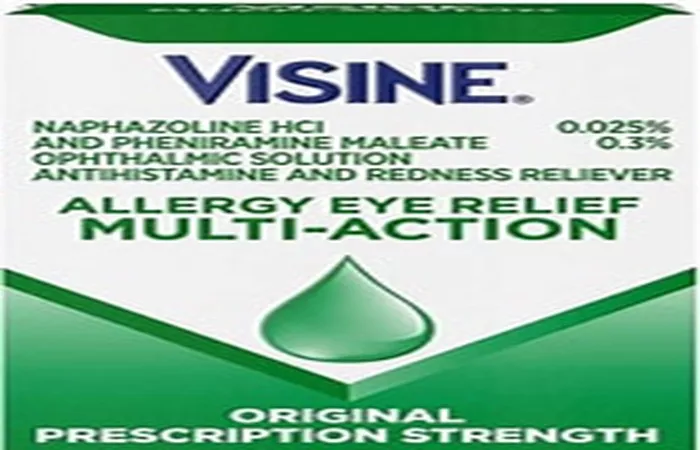Seasonal allergic conjunctivitis (SAC) is a common condition affecting many individuals, causing symptoms such as itchy, red, and watery eyes. Managing these symptoms effectively is crucial for maintaining a good quality of life. This article will provide a detailed overview of the best prescription allergy eye drops, their safety, effectiveness, and suitability for long-term use.
Understanding Allergic Conjunctivitis
Allergic conjunctivitis is an inflammatory condition of the eye caused by an allergic reaction to substances like pollen, dust mites, or pet dander. It is characterized by symptoms such as ocular itching, redness, swelling, tearing, and a burning sensation. The condition can be classified into several types, including seasonal allergic conjunctivitis (SAC) and perennial allergic conjunctivitis (PAC). SAC is particularly prevalent during pollen seasons, affecting up to 20% of the population.
Mechanisms of Action
Prescription allergy eye drops work through various mechanisms to alleviate symptoms. These include:
- Antihistamines: These block histamine receptors, reducing itching and redness.
- Mast Cell Stabilizers: These prevent the release of histamine and other inflammatory mediators from mast cells.
- Dual-Action Medications: These combine antihistamine and mast cell stabilizing properties for comprehensive relief.
- Nonsteroidal Anti-Inflammatory Drugs (NSAIDs): These reduce inflammation and associated symptoms.
- Corticosteroids: These are highly effective in reducing inflammation but are generally reserved for severe cases due to potential side effects.
Top 6 Prescription Allergy Eye Drops
Olopatadine (Patanol, Pataday)
- Mechanism: Dual-action antihistamine and mast cell stabilizer.
- Effectiveness: Studies have shown olopatadine to be highly effective in relieving symptoms of allergic conjunctivitis, with rapid onset of action and long-lasting relief.
- Safety: Generally well-tolerated with minimal side effects. Some users may experience mild irritation or dryness.
- Best For: Patients with moderate to severe symptoms who need fast and sustained relief.
Ketotifen (Zaditor)
- Mechanism: Antihistamine and mast cell stabilizer.
- Effectiveness: Ketotifen has been shown to be effective in reducing itching, redness, and swelling associated with allergic conjunctivitis.
- Safety: Well-tolerated with a low incidence of side effects. May cause mild eye irritation.
- Best For: Patients with mild to moderate symptoms who need relief from itching and redness.
Bepotastine (Bepreve)
- Mechanism: Antihistamine and mast cell stabilizer.
- Effectiveness: Effective in managing symptoms of allergic conjunctivitis, with a rapid onset of action.
- Safety: Generally safe, with mild side effects such as eye irritation reported in some cases.
- Best For: Patients who need quick relief from symptoms and can tolerate mild side effects.
Alcaftadine (Lastacaft)
- Mechanism: Antihistamine and mast cell stabilizer.
- Effectiveness: Provides rapid relief from symptoms, with effects lasting up to 24 hours.
- Safety: Well-tolerated with minimal side effects. Some users may experience mild eye irritation.
- Best For: Patients with moderate symptoms who need long-lasting relief with once-daily dosing.
Epinastine (Elestat)
- Mechanism: Antihistamine and mast cell stabilizer.
- Effectiveness: Effective in reducing symptoms of allergic conjunctivitis, with a rapid onset of action.
- Safety: Generally well-tolerated with minimal side effects.
- Best For: Patients with moderate symptoms who need fast relief.
Bilastine (Xibrom)
- Mechanism: Antihistamine.
- Effectiveness: Provides effective relief from symptoms, with studies showing good efficacy over an 8-week period.
- Safety: Well-tolerated with minimal side effects. Some users may experience mild eye irritation.
- Best For: Patients who need long-term relief from symptoms.
Safety and Long-Term Use
When considering long-term use, it is important to choose medications that are well-tolerated and have minimal side effects. Antihistamines and mast cell stabilizers like olopatadine, ketotifen, and alcaftadine are generally safe for long-term use. However, corticosteroids, while highly effective, are usually reserved for short-term use due to potential side effects such as increased intraocular pressure and cataract formation.
Conclusion
Managing seasonal allergic conjunctivitis effectively requires the right choice of medication. Prescription allergy eye drops like olopatadine, ketotifen, bepotastine, alcaftadine, epinastine, and bilastine offer effective relief from symptoms. These medications are generally safe for long-term use, with minimal side effects. Always consult with a healthcare provider to determine the best treatment plan for your specific needs. With the right approach, you can manage your seasonal allergies and improve your overall comfort.
Relative topics:
7 Common Causes of a Dry Cough in Kids
9 Reasons Your Kids Should Play in the Dirt More
These 7 Foods Might Help Alleviate Seasonal Allergy Symptoms

